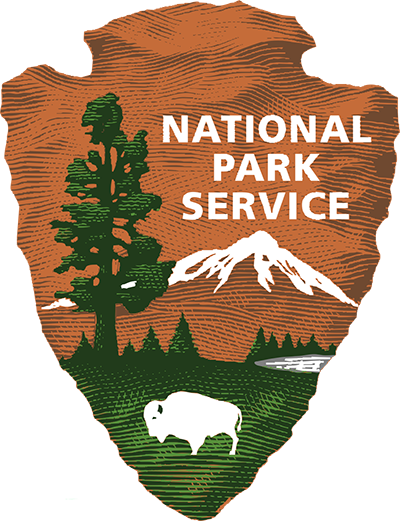CABN Membership
CABN Steering Committee
Kelly Cerialo
 Kelly Cerialo is an Assistant Professor in Business and Hospitality Management and Program Coordinator for the Communications Department at Paul Smith’s College. She holds a Bachelor of Arts Degree in Public Relations/Mass Media Communication from The College of New Jersey, a Masters in Communication Management from the Annenberg School of Journalism and Communication at the University of Southern California, and is currently enrolled in Antioch University’s PhD in Leadership and Change Program. She is the Director for Paul Smith’s College Global Center for Rural Communities and Co-chair of the UNESCO Champlain-Adirondack Biosphere Network. She is the co-founder of the Adirondack and Appeninno Sustainable Parks and Communities Project – an international sustainable development initiative between the Tuscan Emilian Appennine National Park in Italy (a UNESCO Man and Biosphere Reserve), the Champlain-Adirondack Biosphere Network (NY/VT) and the Cape West Coast Biosphere Reserve (South Africa).
Kelly Cerialo is an Assistant Professor in Business and Hospitality Management and Program Coordinator for the Communications Department at Paul Smith’s College. She holds a Bachelor of Arts Degree in Public Relations/Mass Media Communication from The College of New Jersey, a Masters in Communication Management from the Annenberg School of Journalism and Communication at the University of Southern California, and is currently enrolled in Antioch University’s PhD in Leadership and Change Program. She is the Director for Paul Smith’s College Global Center for Rural Communities and Co-chair of the UNESCO Champlain-Adirondack Biosphere Network. She is the co-founder of the Adirondack and Appeninno Sustainable Parks and Communities Project – an international sustainable development initiative between the Tuscan Emilian Appennine National Park in Italy (a UNESCO Man and Biosphere Reserve), the Champlain-Adirondack Biosphere Network (NY/VT) and the Cape West Coast Biosphere Reserve (South Africa).
Jim Brangan
 As the Cultural Heritage and Recreation Coordinator for the Lake Champlain Basin Program (LCBP) and the assistant director of the Champlain Valley National Heritage Partnership (CVNHP), Jim Brangan’s work focuses on facilitating cooperation among partners in New York, Vermont and Quebec on efforts that improve appreciation of the natural and cultural resources of the region.
As the Cultural Heritage and Recreation Coordinator for the Lake Champlain Basin Program (LCBP) and the assistant director of the Champlain Valley National Heritage Partnership (CVNHP), Jim Brangan’s work focuses on facilitating cooperation among partners in New York, Vermont and Quebec on efforts that improve appreciation of the natural and cultural resources of the region.
Jim staffs the LCBP’s Heritage Area Program Advisory Committee, which provides input into the management of the CVNHP. In addition to managing the HAPAC ‘s budget process and the CVNHP’s robust grant program, Jim’s passion lies in building and coordinating partnerships around specific anniversaries and events, including: The Lake Champlain Quadricentennial (2009); Bicentennial of the War of 1812 (2012-2014); Sesquicentennial of the American Civil War (2011-2015); 350th Anniversary of the “Valley of the Forts” (2016); International Year of the Salmon (2019); Centennial of the 19th Amendment of the U.S. Constitution (2020); Temperance, Prohibition, and Smuggling (2021); and the 50th anniversary of the Clean Water Act (2022).
Jim was instrumental in the development of the LCBP’s award-winning wayside exhibit program, which has developed almost 300 interpretive panels throughout the region. He has been involved in developing new trail guides, bikeway routes, and interpretation of all sorts since starting with the LCBP in 2002. Jim’s path to the Champlain Valley led him though Connecticut, Montana, Idaho and West Virginia. Some of his previous experience includes working as a handyman, journalist, surveyor; serving as a wilderness/snow ranger on the Clearwater National Forest; developing interpretive programs/exhibits and establishing partnerships for the Monongahela National Forest’s Seneca Rocks Discovery Center; and working as a regional planner in Chittenden County. He lives in Shelburne with his wife and no-good dog, Ellie. His two sons, Robby and Nate, attend college. He is active on the Shelburne Volunteer Fire Department and the Boy Scouts of America.
Emily Alger
 Emily Alger is the Executive Director of South Hero Land Trust. Coming from a long line of Vermont farmers, storekeepers and teachers; and raised in an old school house in Grand Isle, Emily is guided by strong sense of place and deep commitment to her community. Emily joined SHLT in 2009, working as Programs Director before being appointed Executive Director in 2015. Emily’s particular interest is the connections that people form with the landscape in which they live. She holds a B.A. in Environmental Studies from the University of Vermont, a Certificate in Non-profit Leadership from Marlboro College, and has worked as a farm manager, gardener, and educator.
Emily Alger is the Executive Director of South Hero Land Trust. Coming from a long line of Vermont farmers, storekeepers and teachers; and raised in an old school house in Grand Isle, Emily is guided by strong sense of place and deep commitment to her community. Emily joined SHLT in 2009, working as Programs Director before being appointed Executive Director in 2015. Emily’s particular interest is the connections that people form with the landscape in which they live. She holds a B.A. in Environmental Studies from the University of Vermont, a Certificate in Non-profit Leadership from Marlboro College, and has worked as a farm manager, gardener, and educator.
Yurij Bihun
 Yurij Bihun is the Director of the Vermont-based Shelterwood Systems, LLC and a forest resource analyst with extensive experience in conservation, international development, sustainable forest management and protected area management. In addition to teaching, research, writing and public speaking, Mr. Bihun has a wide spectrum of on-the-ground experience working with management of forest ecosystem services and the restoration of natural landscapes. The geographic scope of his experience includes long- and short-term work in North America, Central & Eastern Europe, Eurasia, Latin America and the Caribbean region. He has been on the steering committee of the UNESCO Champlain Adirondack Biosphere Network since 2016.
Yurij Bihun is the Director of the Vermont-based Shelterwood Systems, LLC and a forest resource analyst with extensive experience in conservation, international development, sustainable forest management and protected area management. In addition to teaching, research, writing and public speaking, Mr. Bihun has a wide spectrum of on-the-ground experience working with management of forest ecosystem services and the restoration of natural landscapes. The geographic scope of his experience includes long- and short-term work in North America, Central & Eastern Europe, Eurasia, Latin America and the Caribbean region. He has been on the steering committee of the UNESCO Champlain Adirondack Biosphere Network since 2016.
From 2003-2004, he was a Senior Fulbright Scholar at the Ukrainian National Forestry University in western Ukraine and was invited to return as a short-term Senior Fulbright Specialist in the fall of 2006. In 2008, he was the principal investigator on a World Wildlife Fund project on cooperation in transboundary protected areas in the Carpathian ecological region including the UNESCO trilateral East Carpathian Biosphere Reserve and the Carpathian Biosphere Reserve in Transcarpathia in Ukraine. Mr. Bihun has worked and maintains an affiliation with the University of Vermont, Rubenstein School of Environment and Natural Resources and the College of Agricultural Sciences at the Pennsylvania State University.
Emanuel Carter
 Emanuel Carter is an Associate Professor in the Department of Landscape Architecture and the Director of the (very new) Center for UNESCO Biosphere Reserve Studies at the SUNY College of Environmental Science & Forestry in Syracuse, New York. Born and raised in Philadelphia, he attended Philadelphia public schools and then Cornell University from which he received a BA in Government (with a concentration in international relations) and a Master of Regional Planning (with a concentration in city planning & urban design). Professor Carter worked for the Ithaca Department of Planning & Development, the Pennsylvania Bureau of Recreation & Conservation, Chase Architectural Associates (in Syracuse, NY) and the Syracuse Department of Community Development before arriving at SUNY-ESF in 1985. He teaches landscape architectural and urban design studios and lecture courses in city planning and urban design. For 22 years he was the Graduate Programs Coordinator in the Department of Landscape Architecture. He has extensive experience in urban and rural community planning and design in the United States, Spain, Chile and Canada. He is a Trustee with the Central & Western New York Chapter of The Nature Conservancy. He lives in Syracuse with his wife Cynthia Carrington Carter, a recently retired historic preservation consultant.
Emanuel Carter is an Associate Professor in the Department of Landscape Architecture and the Director of the (very new) Center for UNESCO Biosphere Reserve Studies at the SUNY College of Environmental Science & Forestry in Syracuse, New York. Born and raised in Philadelphia, he attended Philadelphia public schools and then Cornell University from which he received a BA in Government (with a concentration in international relations) and a Master of Regional Planning (with a concentration in city planning & urban design). Professor Carter worked for the Ithaca Department of Planning & Development, the Pennsylvania Bureau of Recreation & Conservation, Chase Architectural Associates (in Syracuse, NY) and the Syracuse Department of Community Development before arriving at SUNY-ESF in 1985. He teaches landscape architectural and urban design studios and lecture courses in city planning and urban design. For 22 years he was the Graduate Programs Coordinator in the Department of Landscape Architecture. He has extensive experience in urban and rural community planning and design in the United States, Spain, Chile and Canada. He is a Trustee with the Central & Western New York Chapter of The Nature Conservancy. He lives in Syracuse with his wife Cynthia Carrington Carter, a recently retired historic preservation consultant.
Jon Erickson
 Jon Erickson is the David Blittersdorf Professor of Sustainability Science & Policy. He has published widely on energy & climate change policy, land conservation, watershed planning, environmental public health, and the theory and practice of ecological economics. His books include The Great Experiment in Conservation: Voices from the Adirondack Park (2009), Frontiers in Ecological Economic Theory and Application (2007), and Ecological Economics: a Workbook for Problem-Based Learning (2005). Jon is also an Emmy award-winning producer of films such as the four-part PBS series Bloom on sources and solutions to nutrient pollution in Lake Champlain.
Jon Erickson is the David Blittersdorf Professor of Sustainability Science & Policy. He has published widely on energy & climate change policy, land conservation, watershed planning, environmental public health, and the theory and practice of ecological economics. His books include The Great Experiment in Conservation: Voices from the Adirondack Park (2009), Frontiers in Ecological Economic Theory and Application (2007), and Ecological Economics: a Workbook for Problem-Based Learning (2005). Jon is also an Emmy award-winning producer of films such as the four-part PBS series Bloom on sources and solutions to nutrient pollution in Lake Champlain.
He was the Interim Dean of the Rubenstein School from 2012-2014, Managing Director of UVM’s Gund Institute for Ecological Economics from 2009-2012, and is past President of the U.S. Society for Ecological Economics, past editor of the Adirondack Journal of Environmental Studies, and serves on the board or advisory committee of numerous nongovernmental organizations. He is currently an Adjunct Professor at the University of Iceland, and has been a Fulbright Scholar at the Sokoine University of Agriculture in Tanzania, Visiting Professor at the Pontificia Universidad Católica Madre y Maestra in the Dominican Republic and Slovak University of Agriculture in Slovakia, and was on the economics faculty at Rensselaer Polytechnic Institute before joining the University of Vermont in 2002.
Ursula Georgeoglou
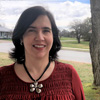 Ursula Georgeoglou is a Research Specialist and the Project Coordinator for the Leadership for the Ecozoic project (L4E) at the Gund Institute for Environment and the Rubenstein School of Environment and Natural Resources at the University of Vermont. She has a background in tropical forest ecology and holds a Bachelor’s degree in Biology, and a Master’s degree in Botany, with a specialization in Ecology. Her thesis research focused on the ecology and forest dynamics of rare trees in the Atlantic Forest, Brazil. Her past experiences include, working at an advanced research station of Mata Atlantica Biosphere Reserve in Brazil, and also at the Agroecology and Livelihoods Collaborative Laboratory, UVM. She has been on the steering committee of the UNESCO Champlain Adirondack Biosphere Network since 2019. She is interested in ecosystem resilience, conservation and restoration. In addition, she is interested in the way humans see themselves in the environment and their interpretation of the living world, and how this interfaces with the process of behavior and paradigm change.
Ursula Georgeoglou is a Research Specialist and the Project Coordinator for the Leadership for the Ecozoic project (L4E) at the Gund Institute for Environment and the Rubenstein School of Environment and Natural Resources at the University of Vermont. She has a background in tropical forest ecology and holds a Bachelor’s degree in Biology, and a Master’s degree in Botany, with a specialization in Ecology. Her thesis research focused on the ecology and forest dynamics of rare trees in the Atlantic Forest, Brazil. Her past experiences include, working at an advanced research station of Mata Atlantica Biosphere Reserve in Brazil, and also at the Agroecology and Livelihoods Collaborative Laboratory, UVM. She has been on the steering committee of the UNESCO Champlain Adirondack Biosphere Network since 2019. She is interested in ecosystem resilience, conservation and restoration. In addition, she is interested in the way humans see themselves in the environment and their interpretation of the living world, and how this interfaces with the process of behavior and paradigm change.
Eric Holmlund
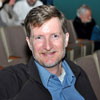 Dr. Eric Holmlund is Director of Graduate Studies and Professor of Environmental Studies in the Department of Environment and Society at Paul Smith’s College where he has been a faculty member since 1998. From 2000 to 2019, Eric founded and directed the Adirondack Watershed Institute Stewardship Program, which is New York State’s largest aquatic invasive species spread prevention and education program dedicated to protecting the natural heritage of Adirondack rivers, ponds and lakes. Since 2014, Eric has co-directed a collaboration between Paul Smith’s College and the Tosco-Emiliano Biosphere Reserve in northern Italy focused on sustainable tourism and community identity. He has served as a wilderness recreation leadership instructor for Outward Bound and the Wilderness Education Association, teaching backcountry skills and ethics across North America. He is a steering committee member of the Paul Smith’s College Global Center for Rural Communities and the Champlain Adirondack Biosphere Network (UNESCO Man and Biosphere Program).
Dr. Eric Holmlund is Director of Graduate Studies and Professor of Environmental Studies in the Department of Environment and Society at Paul Smith’s College where he has been a faculty member since 1998. From 2000 to 2019, Eric founded and directed the Adirondack Watershed Institute Stewardship Program, which is New York State’s largest aquatic invasive species spread prevention and education program dedicated to protecting the natural heritage of Adirondack rivers, ponds and lakes. Since 2014, Eric has co-directed a collaboration between Paul Smith’s College and the Tosco-Emiliano Biosphere Reserve in northern Italy focused on sustainable tourism and community identity. He has served as a wilderness recreation leadership instructor for Outward Bound and the Wilderness Education Association, teaching backcountry skills and ethics across North America. He is a steering committee member of the Paul Smith’s College Global Center for Rural Communities and the Champlain Adirondack Biosphere Network (UNESCO Man and Biosphere Program).
Gannon Osborn
 Gannon Osborn is the Land Conservation Program Manager for the Vermont Department of Forests, Parks and Recreation. In this role, he works with federal and state agencies, funders, conservation organizations, municipalities, and landowners to plan, implement, advocate for, fund, and execute conservation opportunities that protect a diverse suite of values and resources across Vermont. Gannon got his start in land conservation with New York’s Columbia Land Conservancy, and then worked to protect and steward lands on both the New York and Vermont side of the Champlain watershed with the Lake Champlain Land Trust. Gannon holds a B.S. from Marist College in Environmental Science and Policy, with concentrations in both Science and Policy, and minors in Biology and Writing, and is currently pursuing an M.S. in Natural Resources from the University of Vermont’s Rubenstein School of Environment and Natural Resources, where he is also a Gund Fellow. Gannon’s research examines equitable and sustainable land conservation solutions that enable ecological and human systems to flourish harmoniously. Outside of work and school, Gannon enjoys exploring New York and New England’s forests and mountains by bike, skis, and foot.
Gannon Osborn is the Land Conservation Program Manager for the Vermont Department of Forests, Parks and Recreation. In this role, he works with federal and state agencies, funders, conservation organizations, municipalities, and landowners to plan, implement, advocate for, fund, and execute conservation opportunities that protect a diverse suite of values and resources across Vermont. Gannon got his start in land conservation with New York’s Columbia Land Conservancy, and then worked to protect and steward lands on both the New York and Vermont side of the Champlain watershed with the Lake Champlain Land Trust. Gannon holds a B.S. from Marist College in Environmental Science and Policy, with concentrations in both Science and Policy, and minors in Biology and Writing, and is currently pursuing an M.S. in Natural Resources from the University of Vermont’s Rubenstein School of Environment and Natural Resources, where he is also a Gund Fellow. Gannon’s research examines equitable and sustainable land conservation solutions that enable ecological and human systems to flourish harmoniously. Outside of work and school, Gannon enjoys exploring New York and New England’s forests and mountains by bike, skis, and foot.
Nancy Patch
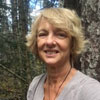 Nancy Patch is County Forester with the VT Dept. of Forests, Parks and Recreation. Nancy has a B.S. in Forestry, an M.A in Education from the University of Vermont and an M.S in Plant and Soil Science from Texas A&M-Kingsville. In addition, Nancy is cofounder of Cold Hollow to Canada Regional Conservation Partnership. Nancy recently served on the Forest Stewards Guild Membership and Policy Council and continues to assist with student engagement. She is also on the Board of Two Countries One Forest, and the Champlain- Adirondack Biosphere Network steering committee. Ecosystem conservation and managing for resilience through the era of climate change are Nancy’s top priority as a forester and citizen
Nancy Patch is County Forester with the VT Dept. of Forests, Parks and Recreation. Nancy has a B.S. in Forestry, an M.A in Education from the University of Vermont and an M.S in Plant and Soil Science from Texas A&M-Kingsville. In addition, Nancy is cofounder of Cold Hollow to Canada Regional Conservation Partnership. Nancy recently served on the Forest Stewards Guild Membership and Policy Council and continues to assist with student engagement. She is also on the Board of Two Countries One Forest, and the Champlain- Adirondack Biosphere Network steering committee. Ecosystem conservation and managing for resilience through the era of climate change are Nancy’s top priority as a forester and citizen
Walter Poleman
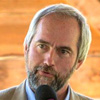 Walter is a senior lecturer in the Rubenstein School of Environment & Natural Resources at the University of Vermont. He specializes in natural history, place-based landscape analysis, conservation science, and education for sustainability. He serves as co-director of the Field Naturalist Ecological Planning Graduate Program, and is the founding director of the PLACE (Place-based Landscape Analysis & Community Engagement) Program. Walter currently serves as co-coordinator of the Greater Burlington Sustainability Education Network, part of the United Nations global network of 174 regional centers of expertise in education for sustainable development. He also coordinates the Rubenstein School’s dual master’s degree program with Vermont Law School, and teaches ecology there each summer.
Walter is a senior lecturer in the Rubenstein School of Environment & Natural Resources at the University of Vermont. He specializes in natural history, place-based landscape analysis, conservation science, and education for sustainability. He serves as co-director of the Field Naturalist Ecological Planning Graduate Program, and is the founding director of the PLACE (Place-based Landscape Analysis & Community Engagement) Program. Walter currently serves as co-coordinator of the Greater Burlington Sustainability Education Network, part of the United Nations global network of 174 regional centers of expertise in education for sustainable development. He also coordinates the Rubenstein School’s dual master’s degree program with Vermont Law School, and teaches ecology there each summer.
Gary Tabor
Gary is the Founder and President of the Center for Large Landscape Conservation. He guides the Center with a vision grounded in science and practice, drawing upon more than 30 years of experience working on behalf of large-scale conservation efforts in Africa, South America, Australia, and Canada, and 12 years within the U.S. environmental philanthropic community. Gary’s conservation achievements include the establishment of Kibale National Park in Uganda; establishment of the World Bank’s Mgahinga/Bwindi/Impenetrable Mountain Gorilla Conservation Trust; co-founding the Yellowstone to Yukon Conservation Initiative; pioneering the field of Conservation Medicine; co-founding Patagonia Company’s Freedom to Roam wildlife corridor campaign; and co-founding the Network for Landscape Conservation.
Gary has three academic affiliations as Senior Conservation Fellow at the University of Montana, as Board of Advisor for the Global Health Initiative at the University of Wisconsin, and as Adjunct Associate Professor, Division of Biological Sciences at the University of Queensland, Australia. Gary is a recipient of the Australian American Fulbright Professional Scholar award in Climate Change and was also awarded a Henry Luce Scholar. Gary also serves as Chair of IUCN World Commission on Protected Areas’ Connectivity Conservation Specialist Group. Gary enjoys skiing, swimming, and spending time with his family in his very limited spare time.
CABN Support Staff
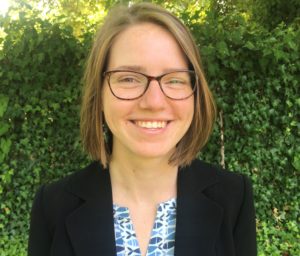 Katie Darr is the Champlain-Adirondack Biosphere Network Coordinator and Citizen Advisory Committee Coordinator for the Lake Champlain Basin Program. She is a member of the US Biosphere Network’s Communications Work Group. As an interdisciplinary social scientist with a focus on collaborative natural resource management, she is invested in work that empowers communities and fosters environmental stewardship. Katie holds a B.A. in Biology and Environmental Studies from Wesleyan University, an M.S. in Marine Resource Management from Oregon State University, and a professional certificate in Sustainable Tourism Destination Management from The George Washington University. She previously worked on issues related to visitor use management, Indigenous food security, and technical communications as a Knauss Fellow with NOAA’s Marine Protected Areas Center.
Katie Darr is the Champlain-Adirondack Biosphere Network Coordinator and Citizen Advisory Committee Coordinator for the Lake Champlain Basin Program. She is a member of the US Biosphere Network’s Communications Work Group. As an interdisciplinary social scientist with a focus on collaborative natural resource management, she is invested in work that empowers communities and fosters environmental stewardship. Katie holds a B.A. in Biology and Environmental Studies from Wesleyan University, an M.S. in Marine Resource Management from Oregon State University, and a professional certificate in Sustainable Tourism Destination Management from The George Washington University. She previously worked on issues related to visitor use management, Indigenous food security, and technical communications as a Knauss Fellow with NOAA’s Marine Protected Areas Center.
CABN Collaborating Partner Organizations
Paul Smith’s College
Paul Smith’s is the only four-year institution of higher education in the Adirondack Park in upstate New York. Known for its experiential education model and extraordinary location, Paul Smith’s College offers hands-on degree programs such as forestry management, fisheries and wildlife science, hospitality, environmental studies and more.
Lake Champlain Basin Program
The Lake Champlain Basin’s boundaries mark most of the CABN region’s eastern border. The basin extends deep into the Adirondack Park and includes Lake Placid, the eastern edge of the Town of Tupper Lake, and the northeastern slopes of Mount Marcy. The Lake Champlain Basin Program (LCBP) works in partnership with government agencies from New York, Vermont, and Québec, non-profit organizations, local communities, and individuals to coordinate and fund efforts that benefits water quality, fisheries, wetlands, wildlife, recreation, and cultural resources of the Lake Champlain watershed. These efforts are guided by the management plan Opportunities for Action (OFA).
The 2022 version of OFA—its fifth iteration—outlines objectives and strategies to address four goals that are the core of the LCBP’s work: Clean Water, Healthy Ecosystems, Thriving Communities, and an Informed and Involved Public. The plan also includes task areas that represent priorities for action. These tasks are identified and supported through the LCBP’s annual budget process that includes funding allocations to partners and a robust local grant program. Since 1992, the LCBP has awarded more than $13 million through 1,200 grants awarded to address the tasks of OFA. Core funding for the LCBP is through the US Environmental Protection Agency, Great Lakes Fishery Commission, and the National Park Service.
Champlain Valley National Heritage Partnership
Managed by the LCBP Steering Committee, most of the Champlain Valley National Heritage Partnership (CVNHP) is located within the CABN Region. The cultural and natural heritage sites and communities within Grand Isle, Franklin, Chittenden, Addison, Rutland, and Bennington counties in Vermont, and Clinton, Essex, Warren, Saratoga, and Washington counties in New York are within this national heritage area (NHA).
The region is the ancestral homeland of Algonquin and Iroquois peoples and, over the past 400 years, has played a vital role in the establishment of the United States and Canada. It has served as a route of exploration, military campaigns and maritime commerce. It was the setting for innovations in business and technology, invasions and armed insurrections, new directions in religion and politics, long periods of peace and prosperity, and the beginnings of the conservation movement. The CVNHP uses three interpretive themes, Making of Nations, Corridor of Commerce, and Conservation & Community, to promote, conserve and interpret this history in a modern context.
The CVNHP operates much like the LCBP, relying on partnerships to carry out the goals, objectives and actions of its management plan. Since 2008, the CVNHP has awarded 151 grants totaling $1.2 million for cultural- and natural-heritage focused projects. This investment generated more than $2.5 million in matching funds from partners.
Greater Burlington Sustainability Education Network
The Greater Burlington Sustainability Education Network (GBSEN) is a Regional Center of Expertise (RCE) on Education for Sustainable Development, recognized by the United Nations University. A member of a global network with over 170 RCEs from around the world, GBSEN promotes education, training, and public awareness to create a sustainable future for the greater Burlington region through the implementation of the 17 Sustainable Development Goals (SDGs). GBSEN’s goal is to promote the work of sustainability practitioners in the region and encourage collaboration to strengthen existing and new sustainability initiatives.
South Hero Land Trust
South Hero Land Trust (SHLT) is a 501-(c)3 non-profit organization with the mission of protecting the farmland, woodland, natural and recreational areas, and open spaces which help give South Hero its distinctive quality of life. There are many ways in which we do this work: building strong community ties, forging partnerships with farmers, establishing critical links between consumers and farmers, getting kids and adults out onto the land, education about our natural world, school programs, and of course, land conservation. The first project and catalyst for the formation of SHLT in 1997 was the conservation of over 300 acres of Vermont’s oldest commercial apple orchard, Allenholm Farm. Since that first project, SHLT has worked with the community and regional partners to protect over 1,700 acres of land in South Hero. We also work with farmers and community members to promote sustainable and viable farming in Grand Isle County. Through our work with the Champlain Islands Farmers’ Market, publication of the Champlain Islands Grown Guide to Agriculture, and other Farm Initiative programs we focus on supporting farms with the technical skills and support they need, and helping our community access fresh local food. Finally, our Stewardship & Education Programs educate our community about the value of the working and natural landscape, to build a culture of land stewardship in South Hero that will last many years into the future.
SUNY College of Environmental Science & Forestry
Founded in 1911, SUNY-ESF was the first college in the United States devoted entirely to studies of The Environment. The main campus, located in Syracuse, New York, offers degree programs at the bachelor’s, master’s and doctoral levels. The work of the College is supported by several Adirondack regional campuses including: (1) The Ranger School at Wanakena, NY; (2) the Newcomb Campus, which includes the Adirondack Ecological Center, the Adirondack Interpretive Center and the Northern Forest Institute; (3) the Cranberry Lake Biological Field Station, and; (4) the NYS DEC Environmental Education Camp at Warrensburg, NY. Outside the Adirondacks the College is supported by: (1) the Thousand Islands Biological Station at Clayton, NY, (2) Heiberg Memorial Forest and the Tully Field Station in Tully, NY, and; (3) the Lafayette Road Experiment Station in Syracuse, NY.
In December, 2019 the College voted to establish a Center for UNESCO Biosphere Reserve Studies which has the following missions:
- To introduce ESF students to the global importance of bioregional planning, design and ecosystem management and to the global system of UNESCO biosphere reserves – what the United Nations calls “science for sustainability support sites” or “learning places for sustainable development”
- To support interdisciplinary graduate and undergraduate studies that prepare students for professional careers in bioregional / biosphere reserve planning, design and ecosystem management and for careers in research, teaching and community engagement
- To support the operations of the Champlain-Adirondack Biosphere Network through community capacity building, research, planning/design and ecosystem management studies and environmental monitoring
- To work with UNESCO biosphere reserves in the Great Lakes / St. Lawrence watershed to understand and enhance the role(s) of bioregionalism in protecting the world’s largest fresh water system, and;
- To enhance the educational mission of SUNY-ESF by connecting the institution to the global environmental mission(s) of UNESCO.
The Center, located in the Department of Landscape Architecture and primarily a collaboration between Main Campus and the Adirondack Ecological Center, is now offering an Introductory Seminar on UNESCO Biosphere Reserves and working to support the Champlain-Adirondack Biosphere Network and the Frontenac Arch Biosphere Network in projects to develop an evolving Atlas of Climate and Environmental Change and to develop a series or rural planning and design workshops for local communities.
